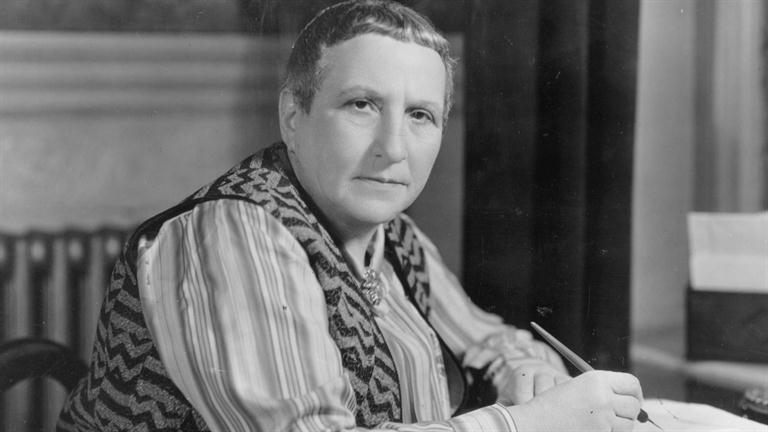This post is taken from a two-page response essay I wrote on Stein’s Tender Buttons in 2011. Nearly four years later, I disagree pretty strongly with myself about the ultimate “failure” of Stein’s project — which only adds to the fun of looking back on the first year of my PhD program!
“The limits of my language mean the limits of my world.” —Ludwig Wittgenstein
Gertrude Stein’s desire to “work in the excitedness of pure being…To get back that intensity into the language” (qtd. in Rothenberg 89) was not, in and of itself, unique for her time. What sets Stein apart from other modern poets—Pound, Eliot, Williams, Cummings—after the same ends, however, is the degree to which she was willing to follow “pure being” into the linguistic abyss, the degree to which she was willing to sacrifice meaning in order to “express what something was” (91). Reactions to her work differ wildly from one reader to the next, but invariably these assessments return to the central question of modern and postmodern poetics: Should we consider works like “Before the Flowers of Friendship Faded Friendship Faded” and Tender Buttons “art” or “nonsense”?
Though it might appear a clever evasion to some, I would argue that Stein’s poetry confronts this false dichotomy of “art” versus “nonsense” head-on and, in the process, creates a third way: a “post-sensical poetics” that regards meaning solely as the unfortunate precipitate of ordinary language practices—one that the modern artist must dispense with in order to approach essential, transcendental truths about reality. Surely the following lines from section XXIII of “Before the Flowers of Friendship Faded Friendship Faded” cannot be discussed or evaluated according to any common conception of “sense” or “meaning”:
Every one which is why they will they will be will he will he be for her for her to come with him with when he went he went and came and any little name is shame as such tattoo. (101)
But this does not entail that the words (and the poem from which they are taken) should then be discarded as pure nonsense. As Marjorie Perloff makes clear in her essay, “Gertrude Stein’s Differential Syntax,” Stein brings words together in a particular grammatical structure that can then be invested with meaning by careful and conscientious readers; the words may not mean, but they can lead us toward meaning. This is why we can speak of her poetry as “post-sensical”: in these works, meaning becomes a secondary or even a tertiary concern of language, a concern to be dealt with not by the poet or the poem, but by the reader—and only if the reader chooses to do so. As such, these poems leave meaning and sense behind, opting instead to approach the truths that ordinary language so often obscures by dislocating words from their traditional moorings and engaging in wildly idiosyncratic uses of language.
Unfortunately, such an approach brings Stein right up against the very limits of language, the boundary beyond which spoken and/or written communication simply cannot go. The closer she comes to those bounds, the more they resist her advances, turning her language back upon itself in self-defeating layers of complexity. In the process, her poetry frustrates and, at times, alienates potential audiences, severely mitigating the power of her message. In attempting to “expose the mysterious uses of language and hence the difficulties in communication” (Perloff 71), Stein employs language in such difficult, mysterious ways that her poetic communication fails to achieve true communion with her readers.
Cover image via biography.com
